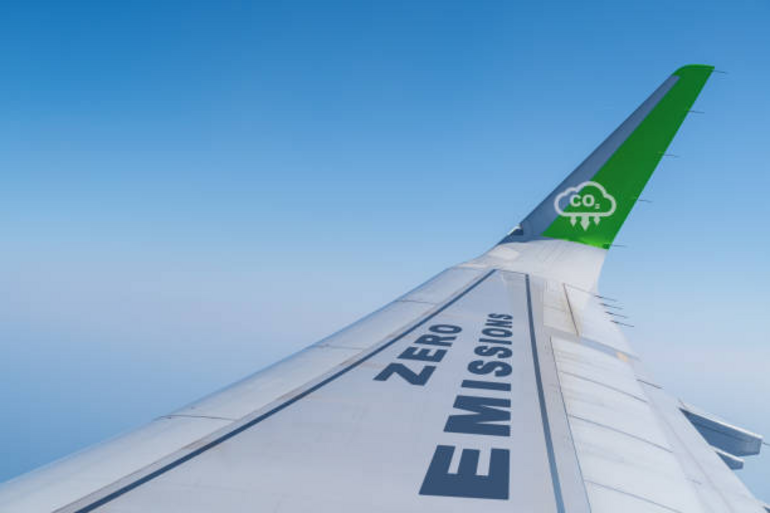06 Nov,2024
The changing climate is an ongoing concern, and as such, the aviation industry has come under review, considering it contributes significantly to carbon emissions. Airlines have lately come out looking for alternative fuel sources; one of these emerging options is Sustainable Aviation Fuel, SAF. What exactly is this SAF, and how does it differ from traditional jet fuel that powered aircraft for decades? This blog will break down the key differences between Sustainable Aviation Fuel and traditional jet fuel, helping you understand why SAF is considered the future of green aviation.
What is Traditional Jet Fuel?
Traditional jet fuel, or Jet-A1, is a product derived from crude oil; a fossil fuel. It has been the standard fuel for commercial and military aircraft for years. As kerosene, Jet-A1 has a high energetic density, which is nearly perfect for long-duration flights. However, the production and consumption of Jet-A1 result in significant releases of greenhouse gases. The aviation sector emits about 2 to 3 percent of carbon dioxide emissions worldwide, and the classic jet fuel is most responsible for this.
Environmental Implications of Traditional Jet Fuel
Emissions of carbon dioxide (CO2), NOx, and particulate matter are associated directly with the combustion of traditional jet fuel, while air pollution and global warming provide a second source of environmental cost. Thirdly, crude oil extraction and refinement have their own environment-related costs-including habitat destruction and water pollution.
As demand for air travel escalates, without embracing alternatives, the traditional jet fuel source is expected to further worsen the environment.
What is Sustainable Aviation Fuel?
Sustainable Aviation Fuel is a renewable, low-carbon jet fuel replacement. It is a product derived from sustainable feedstock sources that include:
- Waste streams – Used cooking oil, agricultural residues etc.
- Plant-based Biomass
- Algae
- Municipal solid waste
As compared to traditional jet fuel, SAF can produce lifecycle carbon emission reductions in the range of 60%-80% depending on which feedstock is utilized and the production process. This can be blended with traditional jet fuel and used with current aircraft without any changes to the engine or fuel infrastructure, so it is a feasible solution for airlines looking to reduce their carbon footprint.
Comparison between SAF and Traditional Jet Fuel1. Source of Feedstock
- Traditionally Derived Jet Fuel: Like others, this fuel is a non-renewable resource taken from the earth.
- Sustainable Aviation Fuel: These will be derived from renewable sources such as waste residues, crops, and algae, and thereby reducing the dependence on fossil fuels.
2. Carbon Emissions
- Traditionally Derived Jet Fuel: When burned, traditionally derived jet fuel releases a large amount of carbon. From exploration to combustion, the carbon cycle of conventional jet fuel let loose enormous units of CO2 into the air.
- Sustainable Aviation Fuel: Cuts life cycle GHG emissions by up to 80% depending on feedstock. SAF offers a cleaner means of curtailing the contribution of the aviation sector toward climate change.
3. Production Process
- Conventional Jet Fuel: Processed from crude oil and consumes substantial amounts of energy in processing; hence, generates enormous amounts of pollution.
- Sustainable Aviation Fuel: Produced through various processes, such as hydrotreatment or gasification of waste and biomass. Mostly, these processes are energy-intensive and hence minimize lifecycle emissions.
4. Availability
- Traditional Jet Fuel: Currently widely available globally and with existing production and supply chain.
- Sustainable Aviation Fuel: SAF is becoming increasingly popular but it is still scarce. Most airlines have started to invest in the use of SAF, and most people feel that the production capacity will increase as the demand increases.
5. Cost
- Traditional Jet Fuel: Generally cheaper because the oil industry is mature, and economies of scale hold true.
- Sustainable Aviation Fuel: As yet more costly to produce, mainly due to the novelty and immaturity of the production processes. However, the costs will fall as this production grows and the technology matures.
6. Aircraft Compatibility
- Petroleum-Based Jet Fuel: Specifically developed for aviation and has been a staple in commercial and military aircraft for many years.
- Sustainable Aviation Fuels: Blended directly into jet fuel Ensures no modification to existing aircraft will be required and allows for progressive replacement of traditional jet fuel by airlines with this high-cost infrastructure change
The Future of Aviation: Why SAF is Gaining Ground
None has ever been so urgent as it is today: greener aviation has never had such momentum behind it. Today, governments and international organizations set ambitious reduction targets for carbon emissions; the spotlight will soon turn to airlines, as this shows. Sustainable Aviation Fuel, however, is considered the key player in achieving this fuel that can offer a significant reduction in emissions.
Many airlines globally have started blending SAF in their fuel mix. For example, big airlines like British Airways, Lufthansa, and United Airlines have promised to “significantly increase” their consumption of SAF. Governments are also promoting the production of SAF using policy instruments, grants, and funding research that can further spur its use.
Conclusion: The Road to Clean Air Travel
Sustainable Aviation Fuel vs. Traditional Jet Fuel: A tip in this green-tinted battle will change the airline industry, not to mention the world of flying forever. While traditional jet fuel has been the reliable source of air travel for decades, its price on the environment is becoming too pricey in an atmosphere where the focus is on climate change fighting. SAF brings a greener, renewable solution that cuts carbon emissions considerably without impairing performance.
While SAF is costlier and harder to access than the older fuel, the current investments in technologies and infrastructure are likely to change that status. Sustainable Aviation Fuel will also be a key innovation as the world continues to adapt to greener practices, which would make air travel cleaner and more sustainable for future generations.









Comments
Anonymous
https://punto2012.mx/ - Noticias y novedades sobre el mundo. Economía, empresas, actualidad, sociedad, ocio.